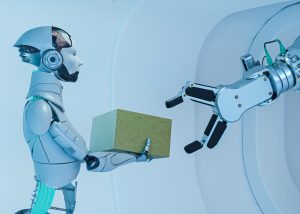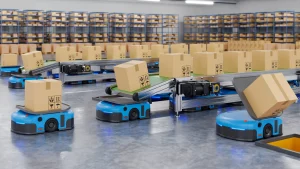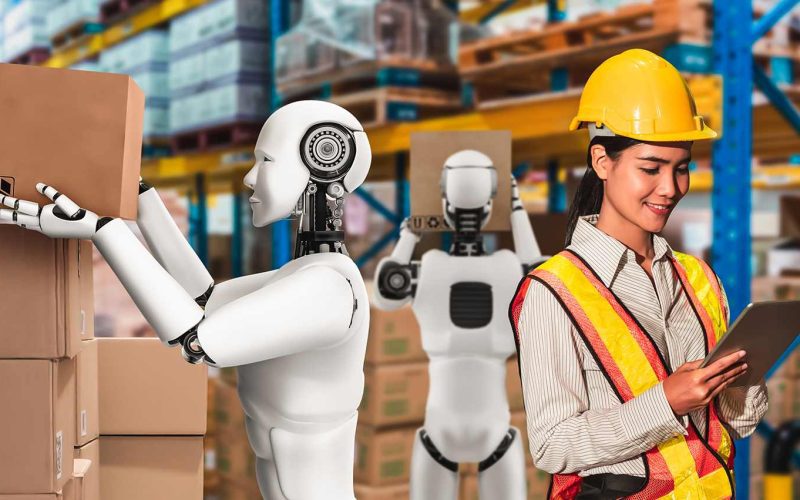Meet Alex, a logistics specialist with over a decade of experience in supply chain management. With a passion for technology and innovation, Alex has witnessed firsthand how AI and robotics are revolutionizing logistics. In this article, Alex delves into the transformative impact of these technologies on the logistics industry.
Revolutionizing Logistics with AI and Robotics

The logistics industry is at the cusp of a technological revolution. With the advent of artificial intelligence (AI) and robotics, logistics operations are becoming more efficient, accurate, and innovative. These advancements are not just incremental improvements but are fundamentally transforming the way logistics is managed and executed.
What is AI?
Artificial Intelligence (AI) refers to the simulation of human intelligence in machines that are programmed to think and learn like humans. In logistics, AI is used to optimize various processes, from route planning to demand forecasting, making operations smarter and more efficient.
What are Robotics?
Robotics involves the design, construction, and operation of robots. In logistics, robots are used to automate tasks such as picking, packing, and sorting, which enhances speed and accuracy in warehouses and distribution centers.
Key Features of AI and Robotics
AI and robotics bring several key features to the logistics industry:
- Automation: Reducing manual labor and human error.
- Efficiency: Streamlining operations and reducing operational costs.
- Scalability: Easily scaling operations to meet varying demand levels.
The Need for Innovation in Logistics
Traditional logistics face numerous challenges, including:
- Inefficiencies: Manual processes are often slow and prone to errors.
- High Costs: Labor and operational costs can be high.
- Lack of Visibility: Limited real-time visibility into operations can hinder decision-making.
The Importance of Technological Advancements
Technological advancements like AI and robotics are crucial for overcoming these challenges. They enable logistics companies to enhance efficiency, reduce costs, and improve overall performance.
How AI and Robotics are Transforming Logistics
AI and robotics are revolutionizing warehousing operations. Automated systems can handle tasks such as inventory management, order picking, and packaging with greater speed and accuracy than human workers. For instance, Amazon’s fulfillment centers use robotic systems to move shelves of products to human workers, reducing the time taken to fulfill orders.
AI-Driven Demand Forecasting
AI algorithms can analyze vast amounts of data to predict demand accurately. This helps logistics companies manage inventory more effectively, reducing the risk of stockouts and overstocking. AI-driven demand forecasting also enables better planning and resource allocation.
Autonomous Vehicles and Drones
Autonomous vehicles and drones are poised to transform delivery and transportation. Self-driving trucks can operate around the clock, reducing delivery times and costs. Drones can be used for last-mile deliveries, reaching remote or congested areas quickly and efficiently.
Amazon’s Automated Warehouses
Amazon has pioneered the use of robotics in its warehouses. The company uses robots to transport products across its fulfillment centers, significantly speeding up the order fulfillment process and reducing labor costs.
UPS’s AI-Enhanced Delivery Routes
UPS uses AI to optimize delivery routes. The company’s ORION system analyzes data to determine the most efficient routes for its drivers, reducing fuel consumption and delivery times.
DHL’s Robotics in Parcel Sorting
DHL has implemented robotic systems in its parcel sorting centers. These robots can sort parcels faster and more accurately than human workers, improving efficiency and reducing errors.
Benefits of AI and Robotics in Logistics
AI and robotics streamline logistics operations, reducing the time and effort required to complete tasks. This leads to increased efficiency and productivity.
Improved Accuracy
Automated systems are less prone to errors compared to manual processes. This improves the accuracy of tasks such as order picking and inventory management.
Enhanced Customer Experience
By improving efficiency and accuracy, AI and robotics help logistics companies provide better service to their customers. Faster delivery times and accurate order fulfillment lead to higher customer satisfaction.
Challenges and Limitations
Implementing AI and robotics can be costly. Businesses need to invest in new technologies, infrastructure, and training for their employees. However, the long-term benefits often outweigh the initial costs.
Technical Barriers
The integration of AI and robotics into existing systems can pose technical challenges. Companies need to address issues such as system compatibility, data integration, and cybersecurity.
Future Prospects of AI and Robotics in Logistics

Several emerging trends are shaping the future of AI and robotics in logistics. These include the integration of AI with the Internet of Things (IoT), the development of more advanced autonomous vehicles, and the use of AI for predictive maintenance.
Long-Term Predictions
In the long term, AI and robotics are expected to become integral parts of logistics operations. As technology advances and becomes more affordable, more companies will adopt these innovations, leading to widespread improvements in efficiency, accuracy, and customer satisfaction.
Informative Table
| Aspect | Description |
| Automation | Reduces manual labor and human error in logistics operations. |
| Efficiency | Streamlines operations, reducing operational costs and increasing productivity. |
| Scalability | Easily scales operations to meet varying demand levels. |
| AI-Driven Demand Forecasting | Uses AI algorithms to analyze data and predict demand accurately. |
| Autonomous Vehicles and Drones | Self-driving trucks and drones for faster and more efficient deliveries. |
| Amazon’s Automated Warehouses | Utilizes robots to transport products, speeding up order fulfillment and reducing labor costs. |
| UPS’s AI-Enhanced Delivery Routes | AI system (ORION) optimizes delivery routes, reducing fuel consumption and delivery times. |
| DHL’s Robotics in Parcel Sorting | Robots sort parcels faster and more accurately, improving efficiency and reducing errors. |
| Increased Efficiency | AI and robotics streamline tasks, enhancing overall logistics efficiency. |
| Improved Accuracy | Automated systems reduce errors compared to manual processes. |
| Enhanced Customer Experience | Faster delivery times and accurate order fulfillment lead to higher customer satisfaction. |
| Implementation Costs | Initial investment in technology, infrastructure, and training can be high. |
| Technical Barriers | Challenges include system compatibility, data integration, and cybersecurity. |
| Future Prospects | Integration with IoT, advanced autonomous vehicles, and predictive maintenance are emerging trends. |
Conclusion
AI and robotics are revolutionizing the logistics industry, bringing unprecedented levels of efficiency, accuracy, and innovation. As these technologies continue to evolve, their impact on logistics will only grow, driving the industry toward a more automated and intelligent future.
FAQs
What is AI in logistics? AI in logistics refers to the use of artificial intelligence technologies to optimize various logistics processes, such as route planning, demand forecasting, and inventory management.
How are robotics used in logistics? Robotics in logistics involves using robots to automate tasks such as picking, packing, sorting, and transporting goods within warehouses and distribution centers.
What are some real-world applications of AI and robotics in logistics? Real-world applications include Amazon’s automated warehouses, UPS’s AI-enhanced delivery routes, and DHL’s robotic parcel sorting systems.
What are the benefits of using AI and robotics in logistics? Benefits include increased efficiency, improved accuracy, reduced operational costs, and enhanced customer experience.
What are the challenges in implementing AI and robotics in logistics? Challenges include high implementation costs, technical barriers, and the need for integration with existing systems.












